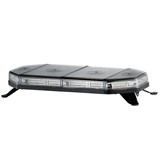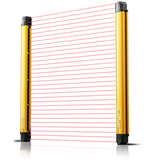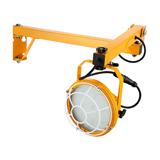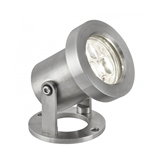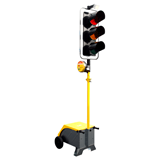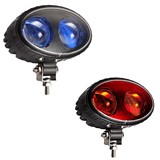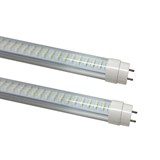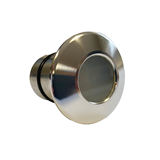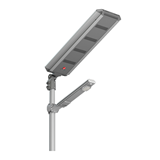Austrade’s Chief Economist Tim Harcourt said Australian exporters have historically proved able to adjust well to floating exchange rates and in fact the floating exchange rate has been an overall strength for economic policy in Australia.
“According to research by Austrade and DHL, whilst most exporters regularly monitor the exchange rate, only 20 per cent believe that it will affect their decision to further invest or expand their overseas operations,” Harcourt said.
“Surveyed exporters see the moving exchange rate as a fact of life of operating in a global economy and make their decisions based on long-term plans and building strong relationships with clients, customers and business partners.
“Austrade research shows many potential exporters have all the right attributes economically speaking, yet they don’t have the confidence or attitude to take the first step. This is when a bit of export coaching and marketing advice can turn these potential exporters into fully-fledged global businesses,” he said.
Meanwhile, Mr Harcourt said new Australian Bureau of Statistics (ABS) figures reveal out of the 42,194 Australian exporting businesses in the exporter community in 2005-06, New Zealand remains Australia’s top export destination even though in dollar value, Japan is our most lucrative export market.
“Figures show 17,394 Australian businesses exported to New Zealand in 2005-06. This indicates that many exporters actually find exporting ‘across the ditch’ relatively easy and that Kiwiland is a good ‘nursery’ to start with when learning the craft of exporting,” he said.
“Despite these figures, while New Zealand attracts over 17,000 exporters and Japan only 3,634, the value of exports to Japan was over $31 billion whilst exports to New Zealand were worth under $9 billion.”
Harcourt said Free Trade Agreements have also had positive impacts on trade for Australian businesses.
”The United States is Australia’s second highest export destination, with 9253 exporters. Many small to medium sized businesses get their start in the USA as they’re attracted by the size of the market. The Free Trade Agreement (FTA) with the USA has also helped to provide more opportunities to these companies,” he said.
“For example, Harcourt said Austrade/Sensis research showed there’s been a jump in the proportion of exporting small and medium sized enterprises (SMEs) selling to the USA since the FTA has been in place.
“Another FTA country, Singapore is in third place with 6,397 exporters and then comes the UK with 5,486 and Hong Kong on 4,984. ‘Entrepot’ economies like Singapore and Hong Kong tend to have lots of wholesale trading houses and act as a hub port for exporters (and importers). The Australian Government has also announced it will commence formal FTA negotiations with Japan in 2007,” Harcourt said.
According to Harcourt the data regarding Australia’s top 20 export destinations has been stable for some time, with only a few countries changing positions, however, if you look at longer term snapshots, China is charging up the table.
“A comparison of the 1989-90 rankings with the present shows, China is surging ahead, which is no surprise, they’ve experienced 10 per cent GDP growth every year for ten years. With more Chinese climbing up the economic ladder due to Government reforms, consumption has grown rapidly. More and more Chinese now have spending power,” he said.
- Suppliers
- New to IndustrySearch? Book a Demo
- Advertise with us
- Login
- Email Marketing
- Buyers
- Get Quotes
- Articles & Ideas
- Login
- Subscribe to newsletter
- My Details
- Get Quotes
- Automation & Control
- Automotive Workshop Equipment
- Commercial Cleaning Equipment & Supplies
- Construction Equipment & Heavy Machinery
- Conveyor Systems & Components
- Electrical & Power Generation Equipment
- Electronic Components
- Farming & Agriculture
- Food & Beverage Processing
- Forklifts & Forklift Attachments
- Hydraulic & Pneumatic Equipment
- Industrial Materials, Tools & Components
- Industrial Pumps
- IT Hardware & Industrial Computing
- IT Software & Applications
- Laboratory Equipment & Instruments
- Manufacturing & Industrial Equipment
- Material Handling & Lifting Equipment
- Metalworking & Machining
- Mining Equipment & Machinery
- Packaging & Labelling Machinery
- Pallet Handling Equipment
- Personal Protective Equipment
- Security & Surveillance
- Test & Measurement
- Transport & Logistic Equipment
- Warehouse Storage, Shelving & Racking
- Waste Treatment & Environmental Management
- Welding Machines & Accessories
- Woodworking & Joinery Machines
- Workplace Equipment
- Workplace Safety Equipment
- Get Quotes
- Automation & Control
- Automotive Workshop Equipment
- Commercial Cleaning Equipment & Supplies
- Construction Equipment & Heavy Machinery
- Conveyor Systems & Components
- Electrical & Power Generation Equipment
- Electronic Components
- Farming & Agriculture
- Food & Beverage Processing
- Forklifts & Forklift Attachments
- Hydraulic & Pneumatic Equipment
- Industrial Materials, Tools & Components
- Industrial Pumps
- IT Hardware & Industrial Computing
- IT Software & Applications
- Laboratory Equipment & Instruments
- Manufacturing & Industrial Equipment
- Material Handling & Lifting Equipment
- Metalworking & Machining
- Mining Equipment & Machinery
- Packaging & Labelling Machinery
- Pallet Handling Equipment
- Personal Protective Equipment
- Security & Surveillance
- Test & Measurement
- Transport & Logistic Equipment
- Warehouse Storage, Shelving & Racking
- Waste Treatment & Environmental Management
- Welding Machines & Accessories
- Woodworking & Joinery Machines
- Workplace Equipment
- Workplace Safety Equipment
Trusted by 1,000,000+ Australian industrial buyers
Buyers
- Discover products & solutions
- Login
- Subscribe To Newsletter
- Browse All Products
- Read Articles
Suppliers
Advertise
- Promote your products & solutions
- New to IndustrySearch? Book a Demo
- Login / Forgot Password
- Advertise Your Products
- Success Stories
- Email Marketing
- Suppliers
- Advertise with us
- Login
- Email Marketing
- Buyers
- Get Quotes
- Articles & Ideas
- Login
- Subscribe to newsletter
- My Details
Get Quotes
- Automation & Control
- Automotive Workshop Equipment
- Commercial Cleaning Equipment & Supplies
- Construction Equipment & Heavy Machinery
- Conveyor Systems & Components
- Electrical & Power Generation Equipment
- Electronic Components
- Farming & Agriculture
- Food & Beverage Processing
- Forklifts & Forklift Attachments
- Hydraulic & Pneumatic Equipment
- Industrial Materials, Tools & Components
- Industrial Pumps
- IT Hardware & Industrial Computing
- IT Software & Applications
- Laboratory Equipment & Instruments
- Manufacturing & Industrial Equipment
- Material Handling & Lifting Equipment
- Metalworking & Machining
- Mining Equipment & Machinery
- Packaging & Labelling Machinery
- Pallet Handling Equipment
- Personal Protective Equipment
- Security & Surveillance
- Test & Measurement
- Transport & Logistic Equipment
- Warehouse Storage, Shelving & Racking
- Waste Treatment & Environmental Management
- Welding Machines & Accessories
- Woodworking & Joinery Machines
- Workplace Equipment
- Workplace Safety Equipment
Get Quotes
- Automation & Control
- Automotive Workshop Equipment
- Commercial Cleaning Equipment & Supplies
- Construction Equipment & Heavy Machinery
- Conveyor Systems & Components
- Electrical & Power Generation Equipment
- Electronic Components
- Farming & Agriculture
- Food & Beverage Processing
- Forklifts & Forklift Attachments
- Hydraulic & Pneumatic Equipment
- Industrial Materials, Tools & Components
- Industrial Pumps
- IT Hardware & Industrial Computing
- IT Software & Applications
- Laboratory Equipment & Instruments
- Manufacturing & Industrial Equipment
- Material Handling & Lifting Equipment
- Metalworking & Machining
- Mining Equipment & Machinery
- Packaging & Labelling Machinery
- Pallet Handling Equipment
- Personal Protective Equipment
- Security & Surveillance
- Test & Measurement
- Transport & Logistic Equipment
- Warehouse Storage, Shelving & Racking
- Waste Treatment & Environmental Management
- Welding Machines & Accessories
- Woodworking & Joinery Machines
- Workplace Equipment
- Workplace Safety Equipment
Trusted by 1,000,000+ Australian industrial buyers

